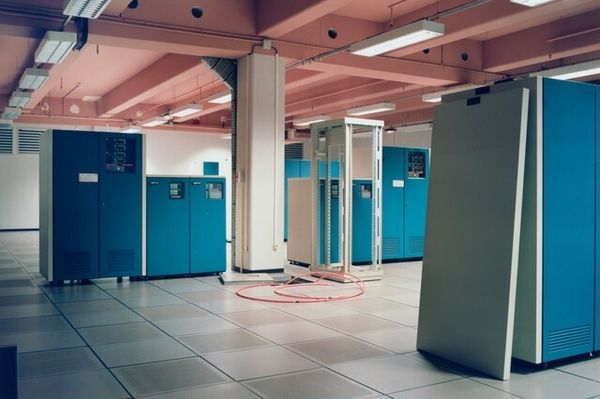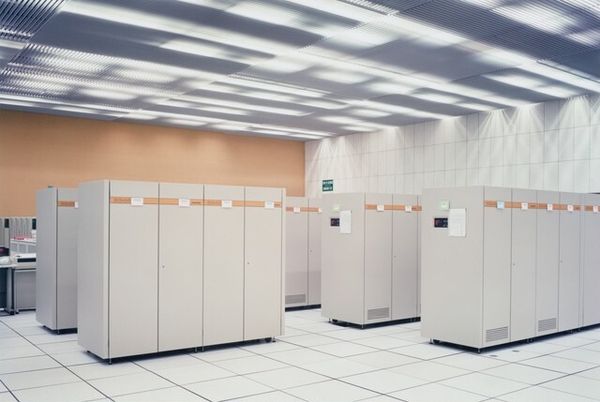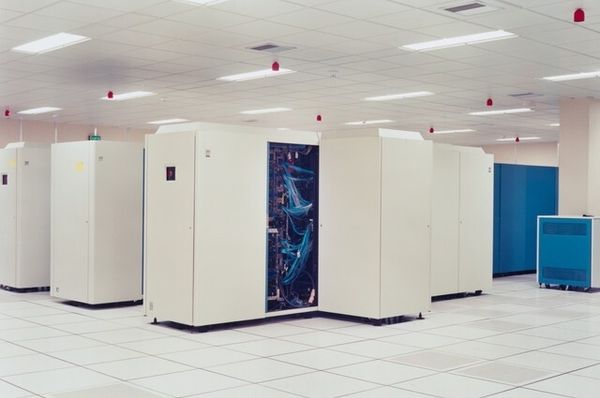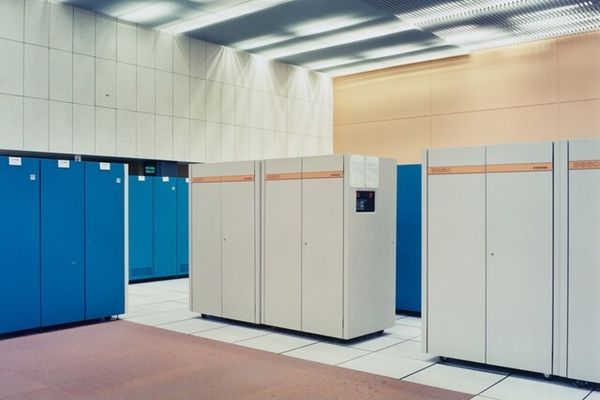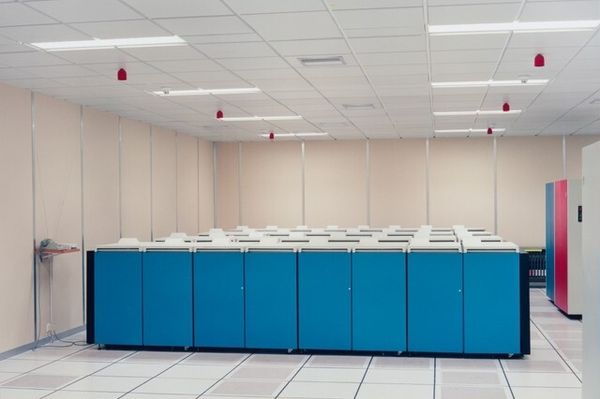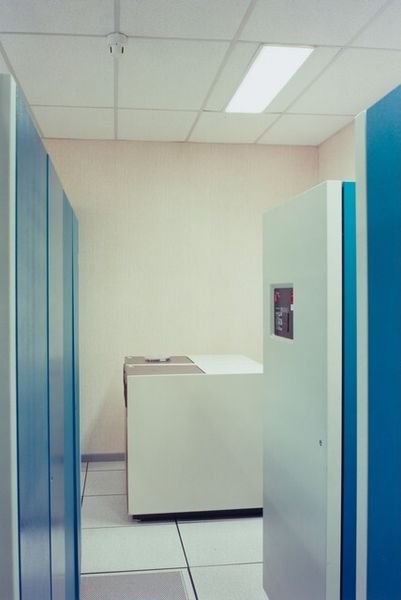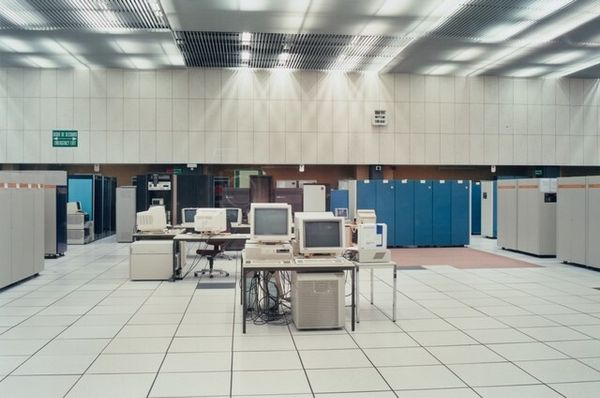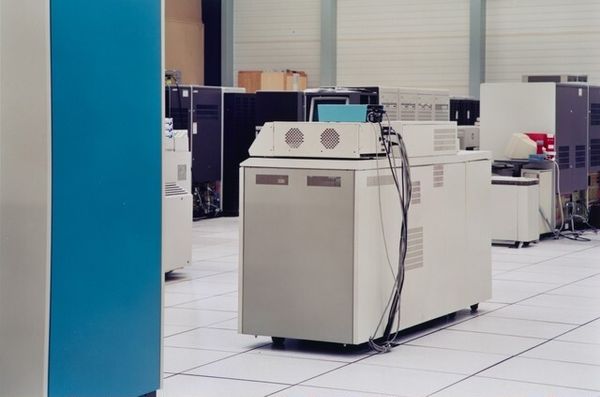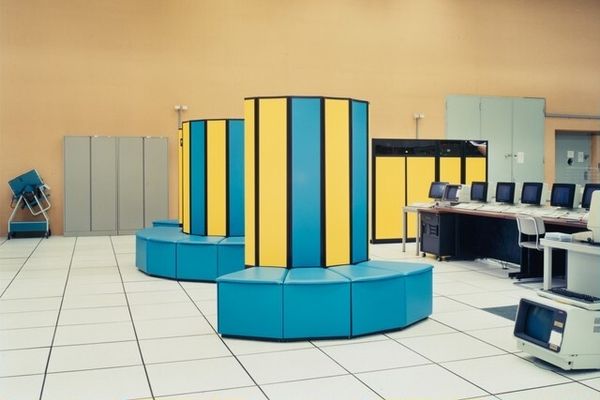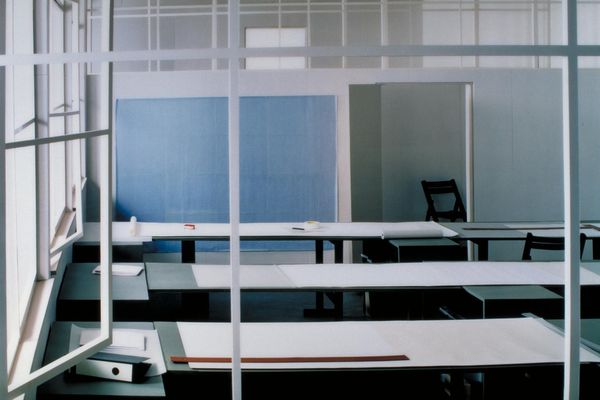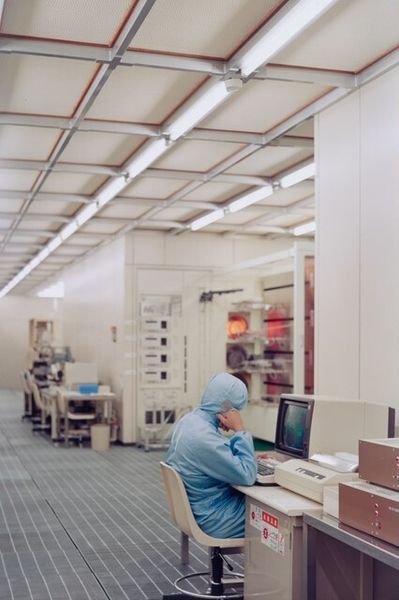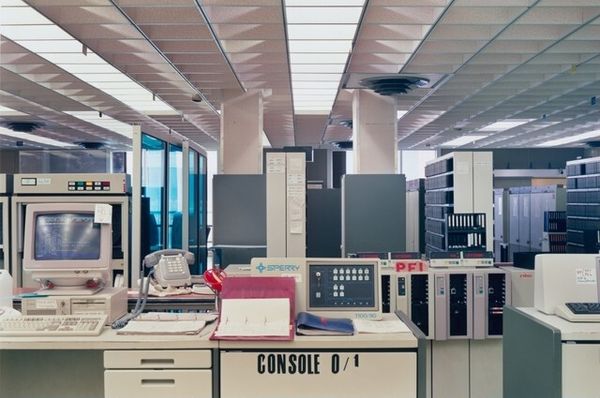
Centre Européen pour la Recherche Nucléaire, Geneva, Switzerland Possibly 1989 - 2006
0:00
0:00
photography
#
conceptual-art
#
photography
#
geometric
Dimensions: image: 17.7 × 26.4 cm (6 15/16 × 10 3/8 in.) sheet: 28.1 × 35.4 cm (11 1/16 × 13 15/16 in.)
Copyright: National Gallery of Art: CC0 1.0
Curator: This is a photograph by Lewis Baltz, possibly taken between 1989 and 2006, titled "Centre Européen pour la Recherche Nucléaire, Geneva, Switzerland". It depicts a room full of what appears to be computer hardware. Editor: My first impression is one of sterility and a sort of cold, unsettling symmetry. The colours are muted, predominantly grey, blue, and white. Curator: The use of serial imagery and detached observation is key to understanding Baltz’s approach. We are presented with a typology of these utilitarian forms. He focuses on the geometric relationships and repeated motifs within the frame. Editor: Absolutely. And these objects – these cabinets, which house powerful processors doing the computational labor of high science - seem designed specifically to vanish from consciousness. A form following the function of disappearing into the architecture, to render themselves invisible as things. The tiled floor is a very pragmatic material and an element that enhances the atmosphere. Curator: Indeed, Baltz highlights the visual vocabulary of industrial architecture, drawing attention to how such spaces shape our experience and expectations. Note also the ceiling. Its artificial illumination flattens the space, reinforcing the sense of clinical precision. Editor: One cannot escape reflecting on labor, specifically intellectual and physical labor involved here. How the work behind the scenes at CERN impacts and is embedded in the broader scientific narrative of globalization. Are we perhaps also supposed to ponder how the space reflects power structures through its organization and access restrictions? Curator: It is less an explicit critique than an invitation to contemplate the underlying structure of these spaces. The conceptual rigor in his style offers us an occasion to examine how repetition affects perception. Editor: And while Baltz may resist providing answers, this photograph seems loaded with questions about how labor, materiality, and form are intrinsically linked, reflecting power within contemporary systems. Curator: His photographic approach asks us to consider our aesthetic judgment of utilitarian subjects and our preconditioned responses. I find there's always an open-ended nature to Baltz's imagery, making each return an analytical pursuit. Editor: I concur, an intellectual and spatial architecture constructed of subtle signs indeed, urging critical reflections even years after. Thank you.
Comments
No comments
Be the first to comment and join the conversation on the ultimate creative platform.

